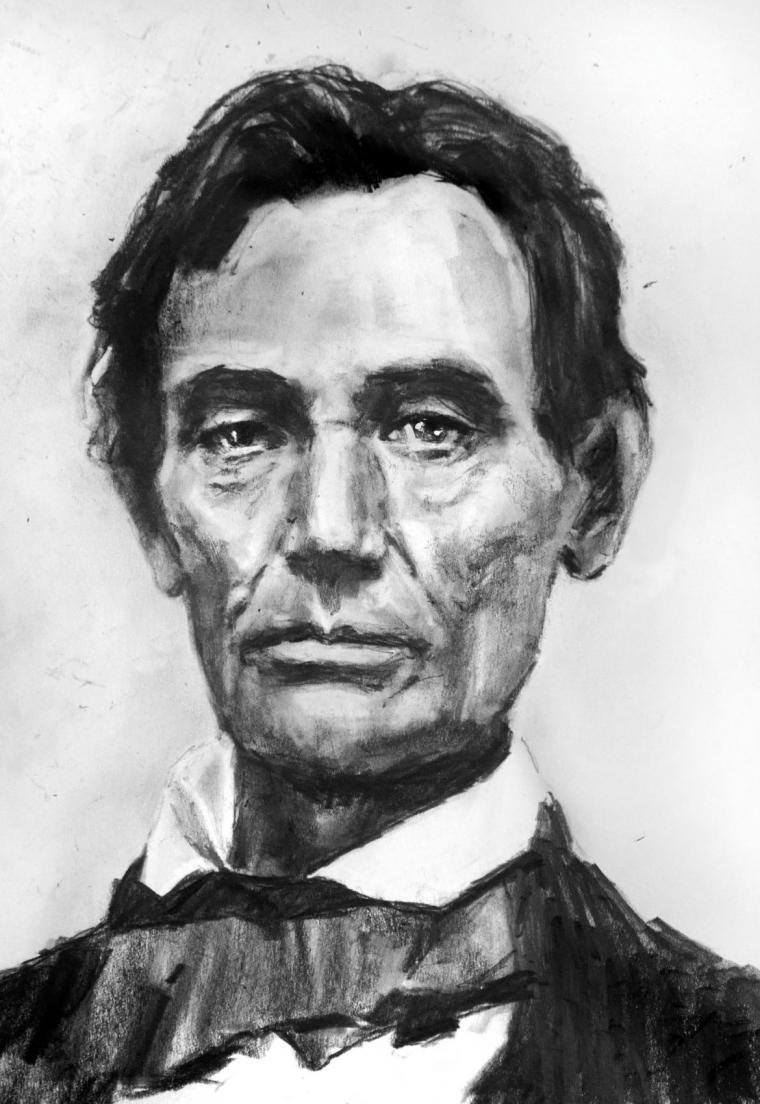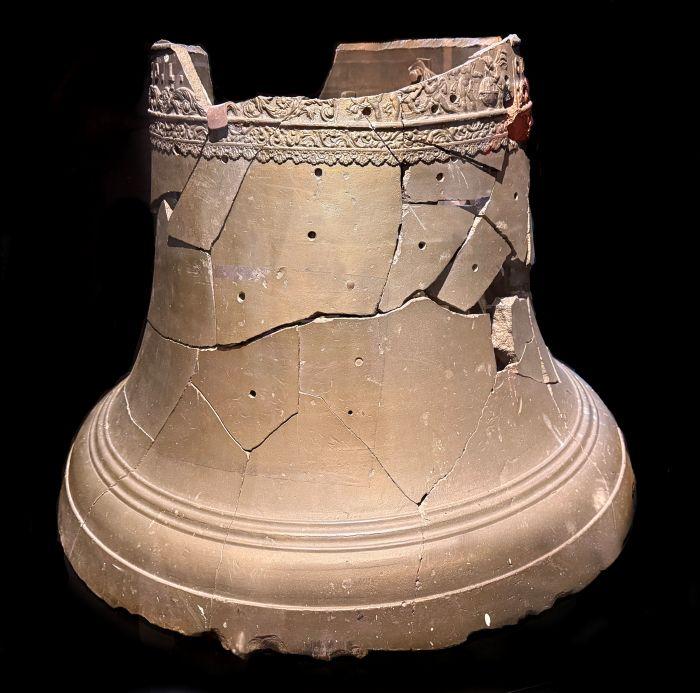
Abraham Lincoln drawing by Bruce Walters
On April 21, 1856, the nation’s first railroad bridge across the Mississippi – connecting the Rock Island Arsenal to Davenport – was completed. Built with more than 220,000 pounds of cast iron, 400,000 pounds of wrought iron, and one million feet of timber, the bridge was an engineering marvel. Steamboats were forced to pass the bridge through a 285-foot-long swing span that rotated on a 32-foot-wide center pier. Wary of the structure’s design, riverboat pilots gave this opening a chilling name: the Gate of Hell.
Just 15 days after the bridge opened, the steamboat Effie Afton struck one of the bridge’s piers while attempting to pass through the Gate of Hell. The collision was catastrophic – violently knocking over the ship’s stoves and chimney, igniting a fierce blaze. Flames devoured the vessel and spread upward to the wooden bridge. A span of the bridge, its timbers engulfed in flames, fell onto the steamboat.
Alarms rang out, mingled with the death cries of the burning livestock. Whistles joined in the cacophony to “warn those on the river to look out for the floating wreck.”
As unlikely as this seems, Samuel Clemens was among the passengers rescued from this inferno. He was just 20 years old. He would later write, “The loss of that bridge almost finished my earthly career.” Seven years after surviving the disaster, he began writing as Mark Twain.

The construction of the bridge had pitted the railroad against the steamboat, Chicago against St. Louis, North against South. The destruction of the Effie Afton brought a lawsuit by its owner, Jacob S. Hurd. The trial was held in Chicago and captivated the nation, dominating newspaper headlines from New York to New Orleans.
The St. Louis Chamber of Commerce raised money for Hurd’s legal fees, as the steamboat trade was paramount to the city’s stature as the “Gateway to the West.”
Abraham Lincoln, then a circuit lawyer from Springfield, was one of three attorneys hired to defend the Railroad Bridge Company in Chicago. Before the trial began, he traveled to Arsenal Island and walked out onto the repaired structure to study the current. A sculpture of Lincoln commemorating this event stands in Bechtel Park, near the current Rock Island Arsenal Bridge, in Davenport.
John Deere, who had also observed the river currents at the bridge’s opening, testified for the defense. Did Lincoln examine Deere’s testimony while he was on the stand? It is certainly possible, but no proof exists.

In his closing argument, Lincoln delivered a vision that extended far beyond the immediate case. He spoke not only of the 12,586 freight cars and 74,179 passengers who had safely crossed the bridge in one year, but of the larger promise the bridge held: year-round commerce that could endure even when the river froze or thinned with treacherous ice.
The jury ultimately deadlocked, with nine jurors siding with the bridge and three dissenting. No damages were awarded and no retrial was pursued. In January 1863, the U.S. Supreme Court ruled that the bridge could legally remain.
Lincoln argued not just for a railroad company, but for a modern nation. The trial gave Lincoln national recognition for the first time. Three years later, he would be elected 16th president of the United States.
Decades later, during routine 1926 maintenance of the river channel by the U.S. Army Corps of Engineers, divers recovered a remarkable relic: the Effie Afton’s bell. It had rested beneath the Mississippi’s current for 70 years.
Today, that bell is displayed at the Rock Island Arsenal Museum.
Bruce Walters is a Professor Emeritus in Art conferred by Western Illinois University.
This is part of an occasional series on famous (or infamous) stories "buried" in the Quad Cities, and their history that is not so well-known today. If there’s a piece of history buried here that you’d like to learn more about, e-mail the location and a brief description to BD-Walters@wiu.edu.










